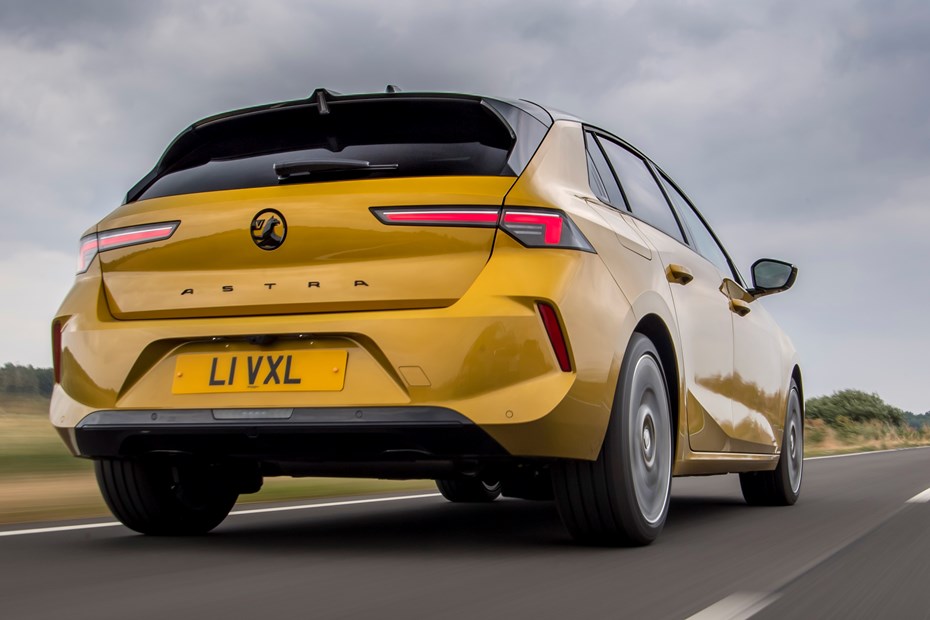Car manufacturers are quickly electrifying their line-ups. Indeed, our round-up of the best hybrid cars on sale features models from big-name brands like BMW, Skoda, Honda and Toyota. Hybrid and electric cars aren’t fringe offerings anymore – and if you buy a new car, it’s getting more difficult to find one that doesn’t feature any form of electrification.
Fully electric cars are currently the summit of our automotive technological development. However, no matter how often manufacturers and ministers try to persuade us to rush out and buy them, the fact is that EVs simply don’t suit everyone’s usage case yet. They’ve improved in leaps and bounds over the past five years, but they’re still expensive, impractical for long-distance drivers and tricky to top-up using the UK’s patchy public charging infrastructure.
Thankfully, if you want to do good for the planet but can’t afford an electric car, you have a broad range of electrified combustion vehicles to choose from. The first rung on the ladder is a mild hybrid, the second is a self-charging hybrid and the third, before your reach an EV, is a plug-in hybrid. All these hybrid vehicles feature combustion engines and electric motors – and each step up the ladder adds a little more electrical assistance.
The benefits of an electrified vehicle over a traditional petrol or diesel car are simple. Hybrids and EVs are kinder to the planet as they create less CO2 emissions – and you stand to save some money on fuel with both. Generally speaking, hybrid cars can extract several more miles from a gallon of fuel than non-electrically assisted cars, while EVs will cost you pennies to refuel if you have a home wallbox charger.
But which electrified vehicle will suit your lifestyle the best? Scroll down for our comparison of mild hybrid vs hybrid vs plug-in hybrid vs electric where we’ll list the pros and cons of each powertrain. Should you find an electrified powertrain you like, there are also links below to our relevant best of pages to give you a head start on your shortlist.
Mild-hybrid cars
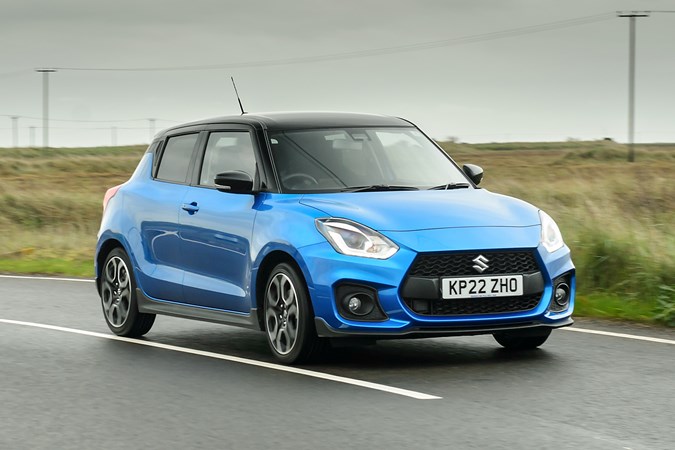
Pros:
✅ Small (and lightweight) batteries
✅ More affordable than a hybrid or PHEV
✅ Keen drivers rejoice – manuals available!
Cons:
❌ Marginal fuel economy benefits
❌ No electric-only drive mode
A mild hybrid is the most basic type of hybrid car. They have tiny electric motors (about the size of an alternator) connected to the engine’s crankshaft with a drivebelt. The motor helps the engine to turn over, improving its acceleration from a crawl and benefitting its efficiency at motorway speeds. Some of the best mild-hybrid cars even come with manual gearboxes.
So, if you’re a keen driver with a guilty conscience, we reckon you’ll be well-served by a mild-hybrid car. The electrical assistance is so marginal you can barely tell it’s there and because their motors and battery packs are light, the car’s handling isn’t dramatically affected. The Suzuki Swift Sport is a great example of a fun mild-hybrid car. It’s small, darty and has a brilliant manual gearbox.
Self-charging hybrid cars
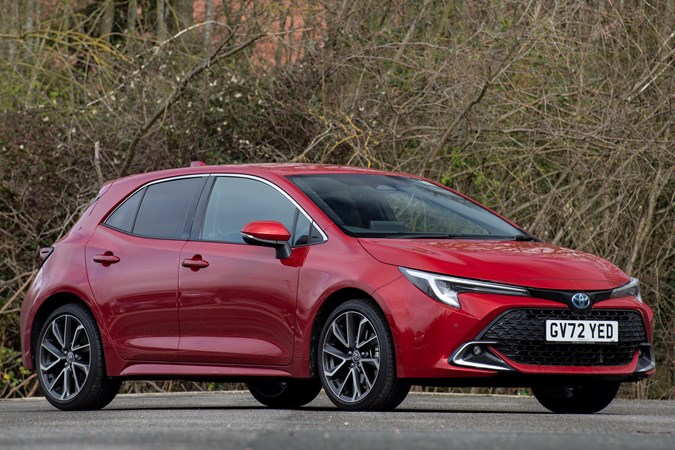
Pros:
✅ Impressive fuel economy gains
✅ No need to plug in at the mains
✅ Some offer small electric ranges
Cons:
❌ Almost all are dull to drive
❌ You might need to put up with a CVT
Self-charging hybrid cars have larger electric motors and battery packs – and they rely on the electric part of their drivetrains more than mild hybrid cars. For example, the Toyota Corolla will pull away from a set of traffic lights on pure electric power alone and periodically disengage its petrol engine when cruising. That brings some impressive fuel economy gains. We managed to achieve more than 60mpg during our time with the car without really trying to drive economically.
The biggest drawback of a self-charging hybrid car is the driving experience. Most don’t enjoy being pedalled hard down a B-road because their engines are designed to be efficient and are mated to constantly variable transmissions. CVTs makes them particularly frustrating to drive for petrolheads, as the position of your foot on the throttle is completely unrelated to the engine’s revs. There’s one exception to the rule – the latest Honda Civic. Read our review to find out why.
Plug-in hybrid cars
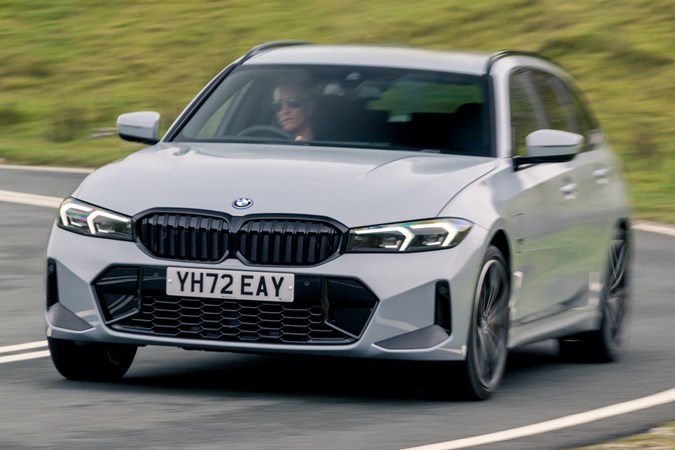
Pros:
✅ Huge official fuel economy figures
✅ Electric-only drive mode
✅ They’re often quite fast
Cons:
❌ Expensive
❌ You need to plug in for the best results
The best plug-in hybrids have massive battery packs and powerful electric motors, which they lean on even more heavily than a self-charging hybrid car. Because their batteries are so large, PHEVs have long electric-only ranges, so they’re great for emissions-controlled areas. The Mercedes GLE 400 e 4MATIC, for example, can drive for more than 60 miles without burning a drop of petrol.
PHEVs also make enormous fuel economy claims (Toyota touts the RAV4 PHEV will return 242mpg) and attract cheap Benefit-in-Kind tax rates thanks to their low CO2 emissions. However, you need to remember to plug your PHEV in at the mains if you want to get anywhere near its official economy figures. Forget and your fuel economy will tumble with all the speed and grace of a sack of spuds flung from a tenth storey window, because you’ll be asking the combustion engine to haul around the dead weight of the PHEV system’s battery and electric motor.
Electric cars
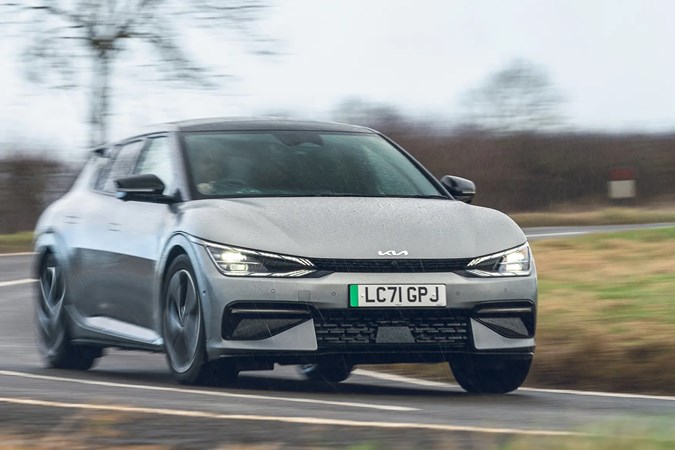
Pros:
✅ Refined driving experience
✅ Instant acceleration from a standstill
✅ Motors are more reliable than engines
Cons:
❌ Long refuelling times
❌ Poor public charging infrastructure
Unlike plug-in hybrid cars, electric cars don’t have internal combustion engines. Instead, they have huge electric motors and massive battery packs that are powerful enough to run a house. The benefits of an EV over a hybrid are simple – EVs are quieter, quicker off the blocks and more reliable as they don’t have a petrol or diesel engine. Electric motors have one moving part, so there’s a lot less to go wrong mechanically.
Maximum range used to be an issue for electric cars, but manufacturers are steadily solving that problem. Now, the best electric cars can cover more than 300 miles on a single charge. The Kia EV6 has an official maximum range of 328 miles on a full battery, while the BMW iX claims 380 miles.
The biggest problem with long-range EVs like these is their price. You’ll pay around £50,000 for the most long-legged EV6 and more than £100,000 for the marathon-ready iX. Happily, there are plenty of affordable electric cars on the market, but you’ll sacrifice some maximum range to save the cash.
These days, the biggest problem facing electric vehicle owners is the charging infrastructure. Zap-Map says that, by the end of March 2023, there were 40,000 public charge points in the UK. That figure sounds encouraging in isolation – but the SMMT reports there are now more than 1.1 million electric cars on UK roads. That means each charging point needs to serve around 27 electric vehicles.
Electric cars refuel slower than petrol cars, too. Even the best electric cars need to stay plugged in for around an hour to completely recharge – and if all the EV owners in one area descend on their local charging hub simultaneously, that can create loads of congestion. This problem will only worsen as the number of EVs on UK roads increase as we march towards the 2030 ban on petrol and diesel cars.
It’s also worth noting that 27-chargers-per-electric-car figure is a best-case scenario. It doesn’t take into account faulty charge points. Naturally, you can dodge this issue entirely by installing an EV charger at home, but not everyone has enough space outside their house to afford that luxury.
Which electrified vehicle is right for me?
That all depends on your lifestyle. If you mainly drive local journeys and you have a dedicated parking space outside your house on which you can install your own charging port, an electric car will probably serve you very well.
If you’re not ready to go all-electric just yet (perhaps you drive huge miles and don’t want the inconvenience of waiting for your car to recharge on the motorway), you’ll be better off with a mild hybrid or a self-charging hybrid. If you don’t mind sacrificing a bit of fuel economy for some driving fun, go for the mild hybrid. If economy is paramount, buy a self-charging hybrid and drive carefully.
PHEVs are more difficult to recommend. Their long electric ranges makes them great around town – but an EV would arguably better suit the local journeys PHEVs can manage on their batteries alone. PHEVs are also not particularly efficient on the motorway once their batteries run out because they’re so much heavier than self-charging hybrid cars.
If you go for a PHEV, we strongly suggest you have a wallbox charger installed at home. That way, you can reap the maximum benefits from your car’s powertrain and your home is futureproofed if you decide to buy an EV in the future.
Just so you know, we may receive a commission or other compensation from the links on this website - read why you should trust us.


